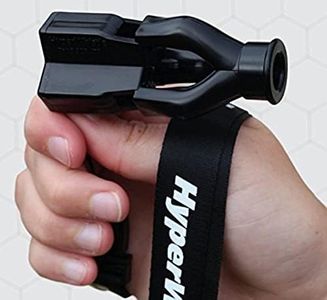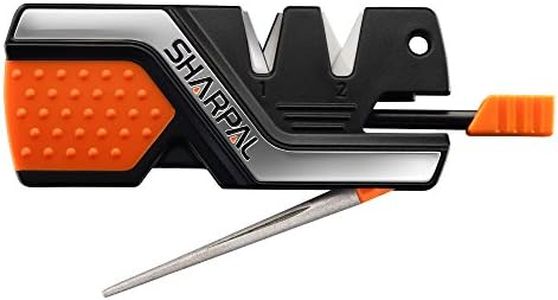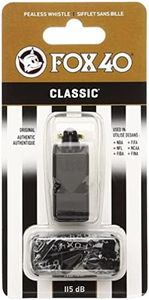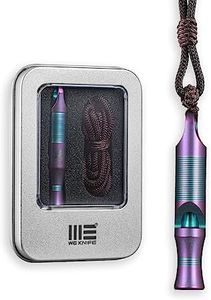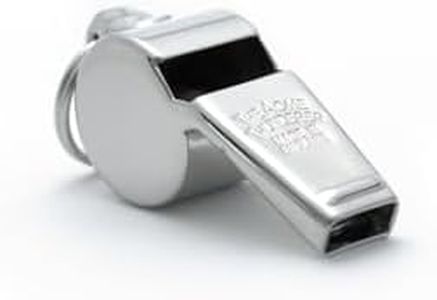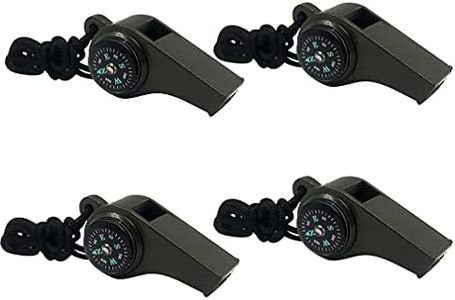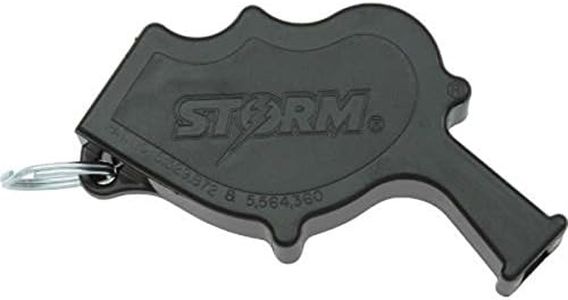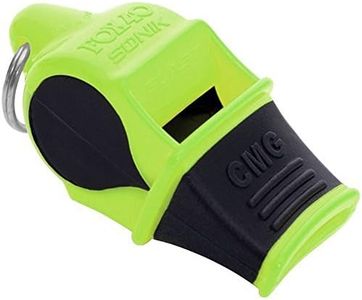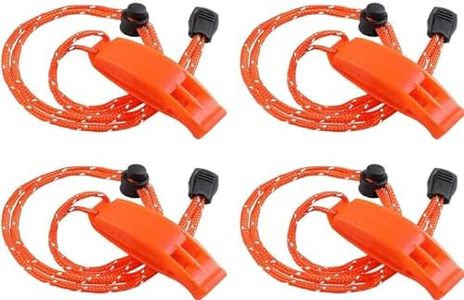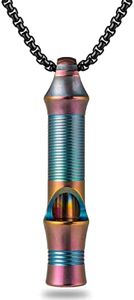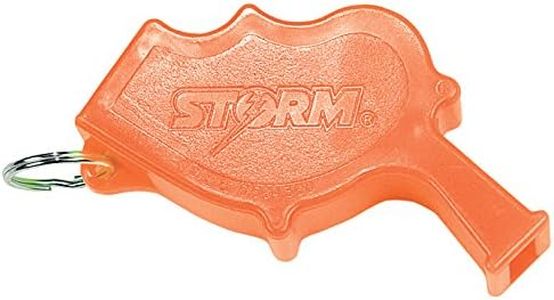We Use CookiesWe use cookies to enhance the security, performance,
functionality and for analytical and promotional activities. By continuing to browse this site you
are agreeing to our privacy policy
10 Best Survival Whistles
From leading brands and best sellers available on the web.Buying Guide for the Best Survival Whistles
Choosing the right survival whistle can be a critical part of your emergency preparedness kit. Whistles are a simple but effective way to signal for help when you’re lost, injured, or in any situation where your voice may not carry far enough. When picking a survival whistle, it’s important to consider several factors to ensure it will perform reliably in tough conditions and suit your needs. Let’s go through the main specifications and features to guide your decision.Loudness (Decibel Rating)Loudness, measured in decibels (dB), indicates how far the whistle’s sound can travel. This is important because the primary goal of a survival whistle is to attract attention, often over large distances or in noisy environments. Whistles generally range from 90dB to over 120dB. Lower decibel whistles (90-100dB) are fine for close-range signaling, such as within a small group. Mid-range decibels (100-110dB) are a good fit for hikers and outdoor enthusiasts, offering effective signaling ability in forests or open areas. High-decibel whistles (110-120+dB) are ideal for maximum reach, useful in windy, mountainous, or rescue scenarios. If you’ll be in remote areas or need a whistle for all-around emergency use, higher decibel values are the safest bet.
MaterialMaterial affects durability, weight, and performance in different climates. Common options are plastic, metal, or a combination of both. Plastic whistles are lightweight, often brightly colored (making them hard to lose), and usually weather-resistant, which is excellent for general outdoor use. Metal whistles tend to be tougher, can withstand rougher handling, and are less likely to crack, but can be heavier and may get very cold or hot depending on weather conditions. Think about your environment and preferences: if weight and visibility matter most, go for plastic; if you prioritize toughness, consider metal.
Pea vs. Pealess DesignWhistles can be either pea or pealess. A pea whistle has a small ball inside that helps produce a trilling sound, while a pealess whistle uses internal chambers to make noise without moving parts. Pea whistles work well in mild conditions, creating a distinct sound, but can freeze or get stuck if wet. Pealess designs are more reliable in rain, snow, or freezing temperatures, and they often produce a louder, sharper sound. For outdoor or emergency use, pealess is usually a safer and more dependable choice, especially in extreme weather.
BuoyancyBuoyancy is the whistle’s ability to float on water, which is crucial if you’ll be near lakes, rivers, or the ocean. Floating whistles are usually made of lightweight plastic and feature sealed construction. If you’re engaging in water sports, boating, or hiking in wet areas, pick a whistle that can float—otherwise, you risk losing it just when it’s needed most.
VisibilityVisibility refers to how easily you can spot the whistle if dropped. Whistles often come in bright, high-contrast colors like orange or yellow for this reason. High-visibility whistles are harder to lose and easier to find in an emergency, especially in natural settings or low light. If you’ll be outdoors, prioritizing a brightly colored or glow-in-the-dark whistle increases your chances of quickly locating it.
Size and Attachment OptionsSize dictates how easily you can carry the whistle and how convenient it is to use. Compact whistles are simple to attach to keychains, zippers, or lanyards, making them easy to keep accessible at all times. Some whistles include built-in clips or holes for attachment. The best choice depends on your activity: for daily carry or minimalist kits, smaller and lighter is usually better, but make sure it’s still loud enough. For boating or if you want to attach it firmly to gear, look for models with robust attachment points.
